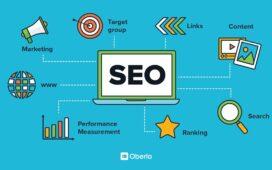If you want to improve your search engine rankings and reduce your bounce rate, then optimizing your WordPress site is a must. In this article, we’ll show you how to optimize the most important components of your WordPress site so that it loads quickly—and stays that way.
Advanced WordPress Optimization
More advanced techniques into wordpress page speed optimization, such as:
- Clean up your database and delete spam comments and trackbacks.
- Reduce server response time (TTFB). This can be done by minimizing the number of requests needed to load a page, combining CSS/JS files into one file, use image sprites for icons etc., minify HTML code, combine JavaScript files into one js file.
- Use a CDN(Content Delivery Network). A CDN is essentially an internet service that distributes content across servers geographically close to users so that web pages load faster. It takes the load off your own server or web host and spreads it out to multiple servers around the world so that they can each deliver their part of the resource separately from each other at once – which means faster loading times for everyone.
Optimize WordPress Database
The database is one of the most important parts of your website. It stores all of your content, images and other data which makes it a very important part to optimize.
Before optimizing any WordPress site it’s important that you backup everything first so you don’t lose anything in case something goes wrong during optimization.
Once you have backed up your files and databases let’s get started on optimizing them by using Wp-Optimize plugin:
Install and activate Wp-Optimize plugin from Plugins > Add New > Upload Plugin > Choose File (select wp-optimize.0.6) > Install Now button
Once activated head over to Tools > Wp-Optimize > Configure Plugin (click on enable)
Optimize Your Homepage to Load Quickly
Optimize your homepage for speed
Your homepage is the most visited page on your site, so why not make it load as quickly as possible? If you want to speed up your WordPress website, then follow these tips:
- Use a lightweight theme
A poorly coded theme will slow down your website. A lightweight theme makes sure that all code is optimized and compressed so that it loads quickly in visitors’ browsers. It also has fewer functions than other themes, which means less code needs to be loaded when they visit a certain page or section of the site.
- Use a fast web host
A speedy web host can help reduce load times significantly because they allow websites to load faster through their network infrastructure (the physical location where servers are located). Choose one with high-quality data centers located close by so that pages don’t take too long to get there.
- Remove unnecessary plugins from home pages if possible
Reduce Redirects
Redirects can be especially harmful in terms of SEO because they often cause duplicate content issues. When you redirect a page, it creates another version of the page that is completely separate from its original form. Search engines like Google don’t understand this type of thing and will treat both versions as separate pages for indexing purposes, leading to an overall decreased ranking for both pages on your site.
In addition, redirects take time to load—time that could’ve been used loading up other beneficial assets such as images and videos instead! This problem is compounded by the fact that there’s no way to tell which redirects are actually needed until after they’ve been implemented into your website architecture (and sometimes even after). Finally, many people forget about 301 redirects at all: these types of redirects cause duplicate content issues too (but only if users click through them).
Remove Query Strings From Static Resources
Remove Query Strings From Static Resources
Query strings are the parts of URLs that come after a question mark. They are often used by search engines to display different results based on the user’s query, so if you have a lot of these in your site’s URL structure it can result in confusion and make your website appear disorganized to visitors. Query strings can also slow down loading speed because they require additional processing time when loading pages.
A great way to improve the speed of your site is by removing query strings from static resources such as CSS, JavaScript and images using something called ‘base64 encoding’ (which converts binary data into text format). This technique allows web browsers like Chrome or Firefox which support this feature to use less bandwidth while browsing websites because they don’t need as much data for each page load since much less information needs to be transferred between servers compared with non-base64 encoded alternatives.
Leverage Browser Caching
Browser caching is a way of storing copies of files on the user’s computer. Once stored, the browser will load these files from its cache rather than downloading them again when needed. This can significantly speed up loading times for your website, especially if you have content that doesn’t change very often (such as an image gallery). However, browser caching also has some drawbacks: because it stores everything as-is and does not check whether an object has changed since it was cached, sometimes old versions of pages or other resources are loaded instead of updated ones.
To enable browser caching in WordPress, you should first look at whether this feature is already included with your hosting service: some hosts provide plugins or access to server settings where you can enable this functionality. If not, enabling browser caching manually is still possible but requires more knowledge about how WordPress works under the hood; we recommend asking your host if they offer any additional help in this area if necessary.
Reduce Server Response Time (TTFB)
There are many things that can affect the speed of a website. One of these is server response time (TTFB). TTFB is the time it takes for a browser to receive a response from a server. It’s one of the most important factors in page load times and can be improved by optimizing your server configuration and optimizing caching.
Use a CDN(Content Delivery Network)
A Content Delivery Network, or CDN for short, is a network of servers that work to optimize your site’s load times. A traditional web host stores your files on one server and serves them from there when people visit your site. However, using a CDN has several benefits. First, it allows you to store some of your files on different servers throughout the world so that visitors are served the fastest file available no matter where they live. Second, it reduces the strain on any single server and allows you to serve more traffic at once without crashing from too much stress on one machine (especially useful if you have millions of visitors). Thirdly, it improves performance by allowing multiple assets (like photos) from different servers instead of having everything come from just one location which would cause slowdowns due to congestion or bottlenecks within a single machine’s RAM capacity (the more people who visit simultaneously).
Clean up your Database and Delete Spam Comments and Trackbacks.
There are many ways to clean up your database. You can delete spam comments and trackbacks, or even clean up the junk data in your WordPress database.
To do this, you’ll need to use a plugin like WP Optimize. This plugin helps you remove old posts, drafts, and pages that weren’t published on your site. It also deletes spam comments from other users so these don’t affect the speed of your website.
Disable Hotlinking of Images from Your Site.
Hotlinking is when someone else uses your images on their site. This can have a negative impact on your site’s performance, SEO and reputation. It also means that when you link to an image in your post, the full-size image will not be displayed unless it’s been embedded with unique code into their website.
If you don’t want people hotlinking any of your images on their sites, here are some ways you can stop them:
- Add a no follow attribute to all images so they won’t pass any link juice—this is often done automatically by WordPress themes but make sure yours has this feature turned on.
You’ll need to optimize your images
Optimize your images and enable Gzip compression to get the fastest loading WordPress sites. Choose a light theme and ensure you are using the right hosting provider.
- Use a CDN
The first thing that you can do is use a CDN (Content Delivery Network). A CDN will improve the performance of your website by distributing its content across multiple servers as close as possible to where each visitor is located. This way it takes less time for visitors from different parts of the world to get their web pages from your server. There are many options available but if you just want something simple and effective, we recommend Cloudflare because they offer an incredible free plan that includes most of their features like protecting against DDoS attacks or using their own DNS service (with 1 million domains), CDN delivery for static files like images etc.
Conclusion
As we saw above, there are many different things that can slow down your site, but by following our recommendations and implementing them on your own site you will be able to speed up loading times significantly.
If you need help in applying this to your website, contact Digital Marketing Philippines as they offer full SEO services, improve WordPress optimization speed, and Social media marketing.






